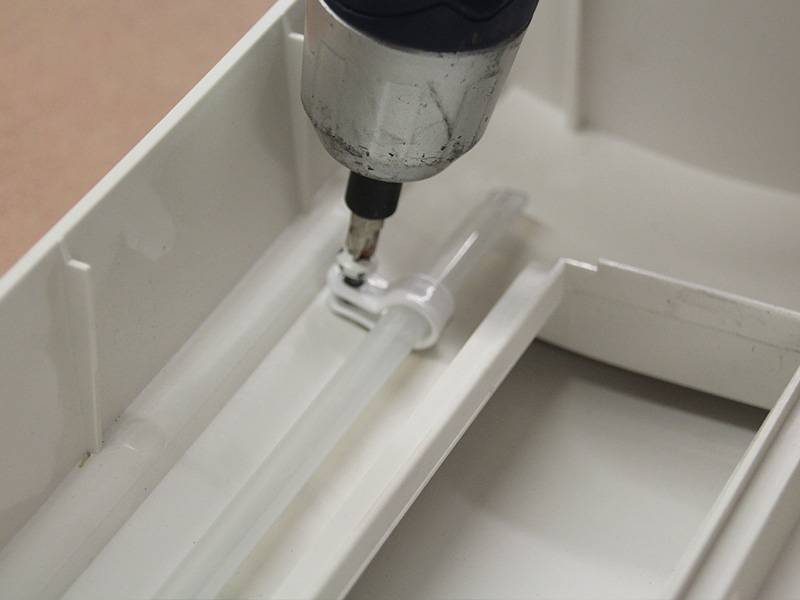- Jan 14, 2021
- 12
- 2
- 33
- If you're a qualified, trainee, or retired electrician - Which country is it that your work will be / is / was aimed at?
- United Kingdom
- What type of forum member are you?
- Trainee Electrician
Hi
My consumer unit is located in the garage, the cables are currently clipped to a solid wall above the unit. I am considering putting the cables in trunking to give them some more protection, the trunking would be just under a meter long.
I believe its common practice to use trunking in this situation but from my understanding of the regulations grouping factors need to be applied. For most cables this is fine as they have less than 30% load but I am concerned about the ring main supplying kitchen and utility.
The ring is 2.5mm protected by 32amp RCD in a split CU with RCD's. It's impractical to change the size of the cable and I am reluctant to use a 20A MCB as it could be quite heavily loaded for short periods; Kettle, washing machine, dishwasher, tumble dryer etc.
There will be other cables in the trunking that could have a reasonable load immersion heater on 2.5mm radial and 7.5 KW cooker on a 10mm radial circuit. Other ring just has TV's, lights and small items on. Lighting circuits are mainly LED now.
Please can it be confirmed that trunking is standard practice and how is it justified under the regulations?
My consumer unit is located in the garage, the cables are currently clipped to a solid wall above the unit. I am considering putting the cables in trunking to give them some more protection, the trunking would be just under a meter long.
I believe its common practice to use trunking in this situation but from my understanding of the regulations grouping factors need to be applied. For most cables this is fine as they have less than 30% load but I am concerned about the ring main supplying kitchen and utility.
The ring is 2.5mm protected by 32amp RCD in a split CU with RCD's. It's impractical to change the size of the cable and I am reluctant to use a 20A MCB as it could be quite heavily loaded for short periods; Kettle, washing machine, dishwasher, tumble dryer etc.
There will be other cables in the trunking that could have a reasonable load immersion heater on 2.5mm radial and 7.5 KW cooker on a 10mm radial circuit. Other ring just has TV's, lights and small items on. Lighting circuits are mainly LED now.
Please can it be confirmed that trunking is standard practice and how is it justified under the regulations?
Last edited:









